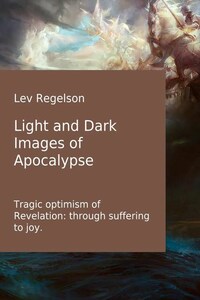Дуапр
Apocalypse (Revelation) of apostle John the Divine
Apostle John the Divine on Pathmos by reception of Apocalypse (Revelation). John at Patmos. The Nizhny Novgorod, Art Museum, XVII c.
Whenever a man of nowadays hears a word "Apocalypse", he imagines scenes of horror and death. Gloomy predictions and prophecies describe the future as the "end of world". However, if we read the Apocalypse (Revelation) of St. Apostle John the Divine or Theologian with an open mind, we will realize that what is really implied in this book is a triumphant paean heralding the Coming of Jesus Christ. The world of evil and misery is transforming into a world of light and joy. The forces of Darkness are desperately striving to seize the initiative and capture the earth, but they will sustain a crushing defeat.
It is the radiant images that primarily attract our attention when we read the revelation, though we have to take into account the forces of Darkness. The interpretive approach we have adopted blends artistic imagery with theological intuition emphasizing the traditions of the early Christian, Holy Fathers, Byzantine and Russian Churches. Yet this essay is neither a theological treatise or scholarly study.
Though we have no intention of eschewing the value of contemporary biblical appraisal, which has so signally enriched our understanding of the human factor in the writing of the Holy Scriptures, despite the multiplicity of such writers, it must necessarily be stressed that their principal, constant co-author is God Himself. The writings of the Holy Bible may reveal a new meaning to each successive epoch and generation, as the said meaning is truly infinite.
Each chapter and verse of the Scriptures, the time of whose writing may be centuries apart, interact as the moments of one grand symphony. The uncertain, reachable meaning of the biblical prophecies furnishes one more indication of their divine origin; thus is the freedom of man safeguarded against attempts at a logically coerced interpretation. In no position to encompass the entire range of imagery covered in the Apocalypse (Revelation), we must of necessity confess that much still defies comprehension. Indeed within the stupendous panorama that Apostle John the Divine reveals we discern merely the contours of the leading personages and some crucial events.




